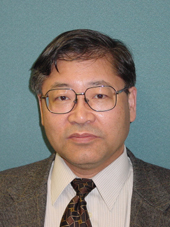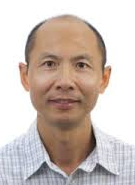In CYBERWORLDS’2014 we are proud to have two very outstanding, world-class invited speakers (in alphabetical order):
- Prof. Tomoyuki Nishita (University of Tokyo & Hiroshima Shudo University, JAPAN)
- Prof. Jian Jun Zhang (National Center for Computer Animation & Bournemouth University, UK)
Prof. Tomoyuki Nishita
Professor Emeritus – University of Tokyo, JAPAN
Professor – Department of Economical Science, Hiroshima Shudo University, JAPAN
Director – UEI Research, JAPAN
Biography:
Dr. Tomoyuki Nishita is a Professor Emeritus of the University of Tokyo and a Professor in the Department of Economical Science, Hiroshima Shudo University, Japan since 2013. He is also the Director of UEI Research. He was in the Department of Complexity Science and Engineering (also in the Department of Information Science) at The University of Tokyo since 1998. He taught at Fukuyama University from 1979 to 1998. He was an associate researcher in the Engineering Computer Graphics Laboratory at Brigham Yong University from 1988 to 1989. He is one of the pioneers of the method of radiosity and soft shadows due to extend light sources. His research interests center in computer graphics including lighting models, hidden-surface removal, and antialiasing. Prof. Nishita received his B.E., M.E. and Ph.D. in Engineering in 1971, 1973, and 1985, respectively, from Hiroshima University.
He has written 18 SIGGRAPH papers and 19 EUROGRAPHICS papers. His pioneering work has been widely recognized with several awards, including several Best Paper awards at EUROGRAPHICS (1995,2003), Pacific Graphics, Nicograph, GRAPP, SCCG, and other reputed international conferences. He was the recipient of the Research Award on Computer Graphics from the Information Processing Society of Japan in 1987, and also received the very prestigious Steven A. Coons award from ACM SIGGRAPH in 2005. He was a member of the editorial board of the IEEE Transactions on Visualization and Computer Graphics. He was also a president of The Institute of Image Electronics Engineers of Japan in 2009.
Title of the talk: «Shading Models for Extended/Environmental Light Sources»
Abstract of the talk:
The degree of realism of the shaded image of a tree-dimensional scene depends on the successful simulation of shading effects. The shading model has two main ingredients: properties of the surface and properties of the illumination falling on it. This paper introduces some of illumination models for generating scenes illuminated by extended light sources. What is an extended light source? A light source that is not a point is called extended source. e.g. a linear source or a planar source. The sky is considered to be a hemisphere with a large radius. This light (called the skylight) is also one type of extended lights, and is an origin of environmental lighting. In real world, soft shadows (i.e., penumbra) are very important. Soft shadows are due to extended light sources. Our shaded image including soft shadows due to linear light sources was accepted for SIGGRAPH Art Show in 1982. This was the first image handling extended light sources. After this presentation, we presented the shading models for area, polyhedral light, curved light, cylindrical sources, and skylight. For quick calculation, we presented lighting design method using basis functions in 1995, which was extended to the famous method called PRT (Precomputed Radiance Transfer). We introduce our historic and current papers related to various types of extended light sources and environmental lighting.
Prof. Jian Jun Zhang
Professor – Computer Graphics, Bournemouth University, UK
Director – Computer Animation Research Center, Bournemouth University, UK
Biography:
Dr. Jian Jun Zhang is Professor of Computer Graphics at the National Centre for Computer Animation, Bournemouth University, UK and leads the Computer Animation Research Centre.
His research focuses on a number of topics relating to the technology of 3D virtual human simulation and animation. He is also interested in virtual reality and graphical applications such as medical visualisation. Some of his research achievements were widely reported by various international news organisations, such as Newscientist and MIT Technology Review.
Prof Zhang has produced over 200 peer-reviewed publications and has given over 30 invited and keynote talks internationally. He was invited to chair numerous international conferences and has been serving the editorial boards of a number of international journals.
Prof Zhang is one of the two founders of the UK’s Centre for Digital Entertainment (CDE) whose remit includes computer animation, computer games and computer visualisation. The CDE has been granted over £10 million (pounds) research funding by the Engineering and Physical Sciences Research Council in the UK.
Title of the talk: «Virtual Human Characters and their Roles in Scientific Research»
Abstract of the talk:
Computer animated human and humanoid characters have received an enormous amount of attention from the computer graphics community and have been widely used in film visual effects and video games. Due to the efforts from both the research community and the animation industry, the technology of virtual human and humanoid character animation is now indispensable to many forms of media and storytelling. In fact, its reach has been so profound that it is not only essential for digital entertainment, but is proving invaluable in many other disciplines.
In this presentation, I will look into the modern technology of 3D animated human and humanoid characters; and explore the roles they can play in some scientific disciplines other than the digital entertainment industry. We will also study the potentials and challenges they present in the applications.

